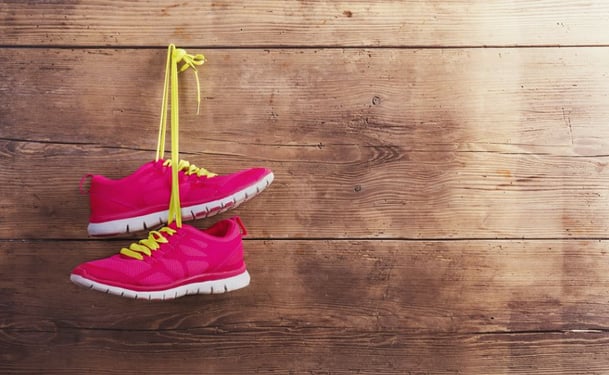When it comes to the types of fungal infections known as tinea pedis or 'athlete's foot,' prevention is key. Taking some general preventative measures will cut down your chances of contracting this very common skin condition. Although athlete's foot is a fungus, it is communicable through contact with shared services. That means the times to look out for this skin condition are when you go into public areas, such as gym locker rooms, beach areas or public restrooms. A range of precautions will helping in dealing with this persistent condition.
Some of these common-sense tips will help make sure you don't end up with a burning, itching case of athlete's foot. Lots of cases of athlete's foot can be hard to eliminate, so keeping them from appearing in the first place can save a lot of time and effort spent in treatment.
1. Use Footwear in Common Areas
One of the quickest ways to get athlete's foot is to go barefoot in public areas. Using footwear to prevent athlete's foot means using shower sandals in gyms and public showers. Shower mats can also be a helpful preventative tool.
2. Change Socks Frequently
When you are exposed to any fungus, changing socks helps cut down on dampness and prevent the spread of athlete's foot. Dry cotton insulates the feet, and keeping feet dry is a critical part of preventing athlete's foot conditions.
3. Make Sure Shoes 'Breathe'
Another way to prevent spread of athlete's foot is through changing shoes or wearing shoes with appropriate soles and uppers that allow for ventilation. Some recommend wearing different shoes on different days, in order to let shoes air out between uses. One of the major risks of athlete's foot is in the incubation environment, where continually worn shoes may develop conditions where this fungus can thrive. Leather and other natural materials may be preferable for shoes that can provide adequate ventilation.
4. Buy Preventative Footwear Items
When it comes to preventing athletes foot, some footwear options are better than others. White cotton socks are better than thin hose type socks, as they provide better insulation and ventilation. Some shoes liners can also help aerate the sole area.
5. Observe High-Risk Areas
The areas between the toes are particularly vulnerable to athlete's foot conditions. Check these areas carefully for any signs of athlete's foot, including scaliness, as well as sensory symptoms like itching.
All of the above can help individuals avoid the common fungal condition that we call 'athlete's foot,' although it's not just athletes who get this kind of skin condition. Some over-the-counter medications are also effective in treating athlete's foot, but in this case, the best treatment is prevention, as existing athlete's foot conditions can be extremely tenacious.
Ask your doctor before treating athlete's foot to get qualified medical advice on your skin condition. Good, diligent home care can keep most cases of athlete's foot from spreading out of control. Nip athlete's foot in the bud before it really starts, and save time and resources dealing with this uncomfortable condition.



